 When I was a junior hospital doctor back in the late 70s, gruelling 1-in-3 or even 1-in-2 live-in rotas made those rare opportunities to escape into the countryside very special. So basing my training in Hull, deliberately near some good birdwatching sites (and near my future wife, not necessarily in that order), I had the choice of the coast with its excellent migration watch points of Spurn and Flamborough Head; the amazing seabird colonies of Bempton Cliffs – before its fences, signposts and visitor centre – or what was then a little known area of reedbed at the confluence of the Trent and the Ouse, the starting point of the mighty, murky River Humber.
When I was a junior hospital doctor back in the late 70s, gruelling 1-in-3 or even 1-in-2 live-in rotas made those rare opportunities to escape into the countryside very special. So basing my training in Hull, deliberately near some good birdwatching sites (and near my future wife, not necessarily in that order), I had the choice of the coast with its excellent migration watch points of Spurn and Flamborough Head; the amazing seabird colonies of Bempton Cliffs – before its fences, signposts and visitor centre – or what was then a little known area of reedbed at the confluence of the Trent and the Ouse, the starting point of the mighty, murky River Humber.
I remember the thrill of sitting down there one spring evening in 1979 and watching what was then a very rare bird indeed – the spectacular aerial display of a pair of Marsh Harriers – before heading off for a pint of cold Guinness at the nearby Black Horse.
Now that we’re living back in Yorkshire, that same reedbed is a relatively short distance from home, so with lockdown restrictions partially lifted, I relished the opportunity to enjoy some splendid isolation…who but a wildlife sound recordist would choose to get out of bed at 1 am and drive off to sit alone in silence in the dark waiting for the dawn chorus? I wasn’t expecting to encounter anyone, nor did I.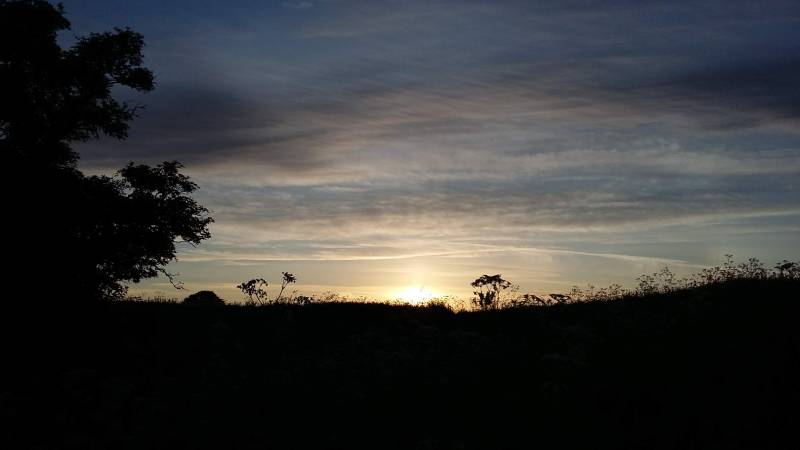 We get used to hearing about how the quality of the countryside is decreasing, that good habitats are disappearing and that there are fewer birds about these days, but in some places things are certainly better than they were 40 years ago. These vast reedbeds on the shores of the Humber are a good example, and so on a perfect late May morning I was treated to sounds which would have been exotic when I was a houseman, and certainly not birds I’ve been accustomed to in all those years living in Northumbria.
We get used to hearing about how the quality of the countryside is decreasing, that good habitats are disappearing and that there are fewer birds about these days, but in some places things are certainly better than they were 40 years ago. These vast reedbeds on the shores of the Humber are a good example, and so on a perfect late May morning I was treated to sounds which would have been exotic when I was a houseman, and certainly not birds I’ve been accustomed to in all those years living in Northumbria. 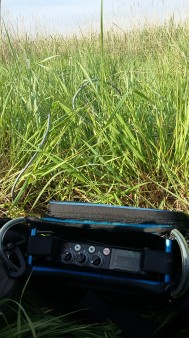
As soon as I opened the car door under clear starry skies, I was greeted by the explosive song of Cetti’s warbler – who would have thought that, from only a handful of pairs down in Kent in the 1970s? Of the other main songsters, while the Sedge warblers have always been about, Reed warblers continue to expand their range northwards and now chatter tunelessly all over. Just before sunrise my target species for the morning – Bittern – starting booming, but too far away for any good recording. However a stunning male Bearded tit came down to inspect my microphones, giving its occasional ‘ching’ calls, and as the sun came up and warmed the air, a pair of Marsh Harriers wafted above me, even calling as they reciprocated a Carrion crows mobbing attempts. Gadwall, another expanding species, flew over in a typical aerial chase and a pair of Egyptian geese added a further touch of the exotic. A strengthening breeze caused me to abandon my recording efforts – reeds can make a noise like a motorway once the wind gets into them – but not before I’d got some good tracks from this rare habitat.
I wasn’t quite sure what to expect when we moved south, but this area will give me new and exciting recording challenges, and I know that I won’t wait another 40 years before revisiting this old haunt.

 Apparently Bottle Jug is an old Yorkshire name for the Long-tailed tit, and refers to their remarkable nest, a flexible ball of lichens, moss and cobwebs lined with feathers, and without any recognisable entrance – truly one of the most wonderful sights in the natural world. Being such a popular little bird and with this amazing nest, they have many other vernacular names including Kitty Longtail, Feather Poke, Bottle tit, but using Bum Barrel in the title could have been an issue with search engines.
Apparently Bottle Jug is an old Yorkshire name for the Long-tailed tit, and refers to their remarkable nest, a flexible ball of lichens, moss and cobwebs lined with feathers, and without any recognisable entrance – truly one of the most wonderful sights in the natural world. Being such a popular little bird and with this amazing nest, they have many other vernacular names including Kitty Longtail, Feather Poke, Bottle tit, but using Bum Barrel in the title could have been an issue with search engines.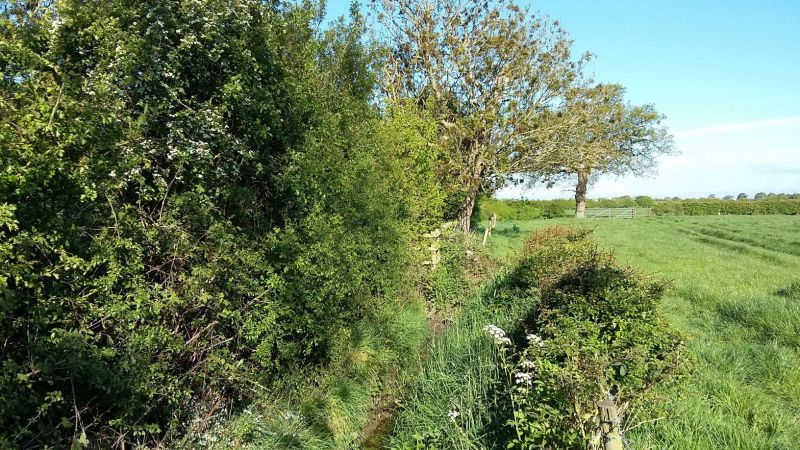
 Poking around in the water, things were looking good with several water boatmen, whirligig beetles and one lonely pond skater. Then up with the algae came a male smooth newt and a stickleback. Clearly time to abandon the clean up and get a hydrophone in there, and yes, the water boatmen were stridulating nicely. Apparently they produce the loudest sound made by any animal for their size – 99dB – though I’ll leave you to Google how they produce it!
Poking around in the water, things were looking good with several water boatmen, whirligig beetles and one lonely pond skater. Then up with the algae came a male smooth newt and a stickleback. Clearly time to abandon the clean up and get a hydrophone in there, and yes, the water boatmen were stridulating nicely. Apparently they produce the loudest sound made by any animal for their size – 99dB – though I’ll leave you to Google how they produce it! But it was another, unexpected sound that captured my attention: a loud, rhythmic buzzing that kept changing over time, often accompanied by loud clicks. As I focused in on its source, there were no animals to be seen, and I gradually narrowed the search down to a plant…one clump of pondweed – Hornwort Ceratophyllum demersum. So followed several minutes of amazement.
But it was another, unexpected sound that captured my attention: a loud, rhythmic buzzing that kept changing over time, often accompanied by loud clicks. As I focused in on its source, there were no animals to be seen, and I gradually narrowed the search down to a plant…one clump of pondweed – Hornwort Ceratophyllum demersum. So followed several minutes of amazement.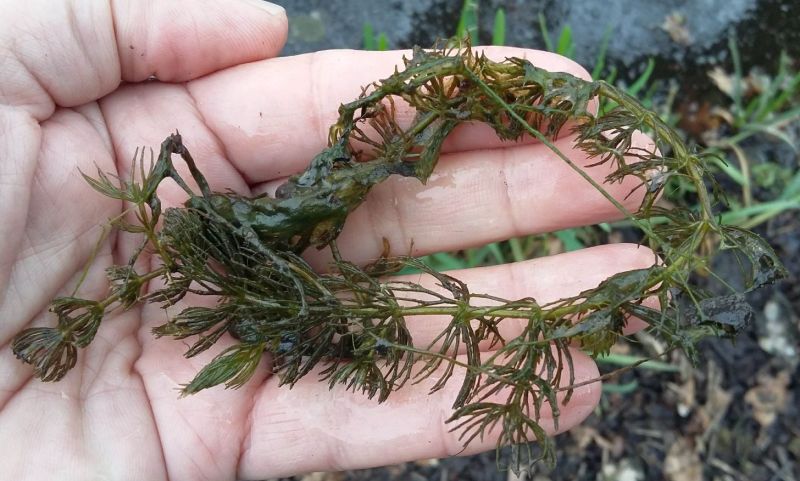 In the sound clip below you’ll hear photosynthesis taking place – this astonishing sound is produced by the release of streams of thousands of oxygen bubbles. What surprises me is how structured the sound is and how it changes over time, which is due to changes in light intensity – hence the fact that only the pondweed near the surface in strong sunlight was making the sound. When I took a piece out of the pond into a slightly shaded bowl, the sound changed dramatically, the buzzing slowing and quietening down. Of course this is a well known school experiment, but I didn’t have a hydrophone in 1972 when I was doing Biology A-level.
In the sound clip below you’ll hear photosynthesis taking place – this astonishing sound is produced by the release of streams of thousands of oxygen bubbles. What surprises me is how structured the sound is and how it changes over time, which is due to changes in light intensity – hence the fact that only the pondweed near the surface in strong sunlight was making the sound. When I took a piece out of the pond into a slightly shaded bowl, the sound changed dramatically, the buzzing slowing and quietening down. Of course this is a well known school experiment, but I didn’t have a hydrophone in 1972 when I was doing Biology A-level.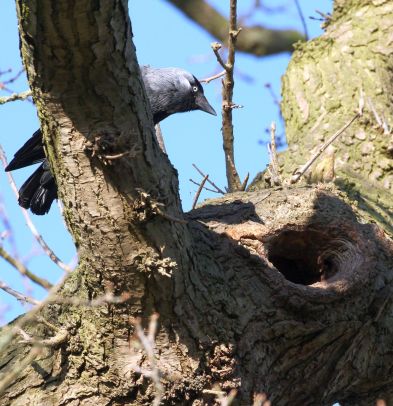
 Jackdaws are intelligent and wary birds, so getting some images required setting up my hide in the field below. That hide was my old ‘Fensman’ that I bought almost 50 years ago. Sitting back in there, its musty and somewhat tarry smell immediately took me back to some of my best, and worst, sound recording trips: midge and mosquito bitten in Kielder Forest and the Highlands of Scotland, or sitting on the seashore on the Isle of Mull as the tide came in and flooded the hide. But what better place to self isolate?!
Jackdaws are intelligent and wary birds, so getting some images required setting up my hide in the field below. That hide was my old ‘Fensman’ that I bought almost 50 years ago. Sitting back in there, its musty and somewhat tarry smell immediately took me back to some of my best, and worst, sound recording trips: midge and mosquito bitten in Kielder Forest and the Highlands of Scotland, or sitting on the seashore on the Isle of Mull as the tide came in and flooded the hide. But what better place to self isolate?!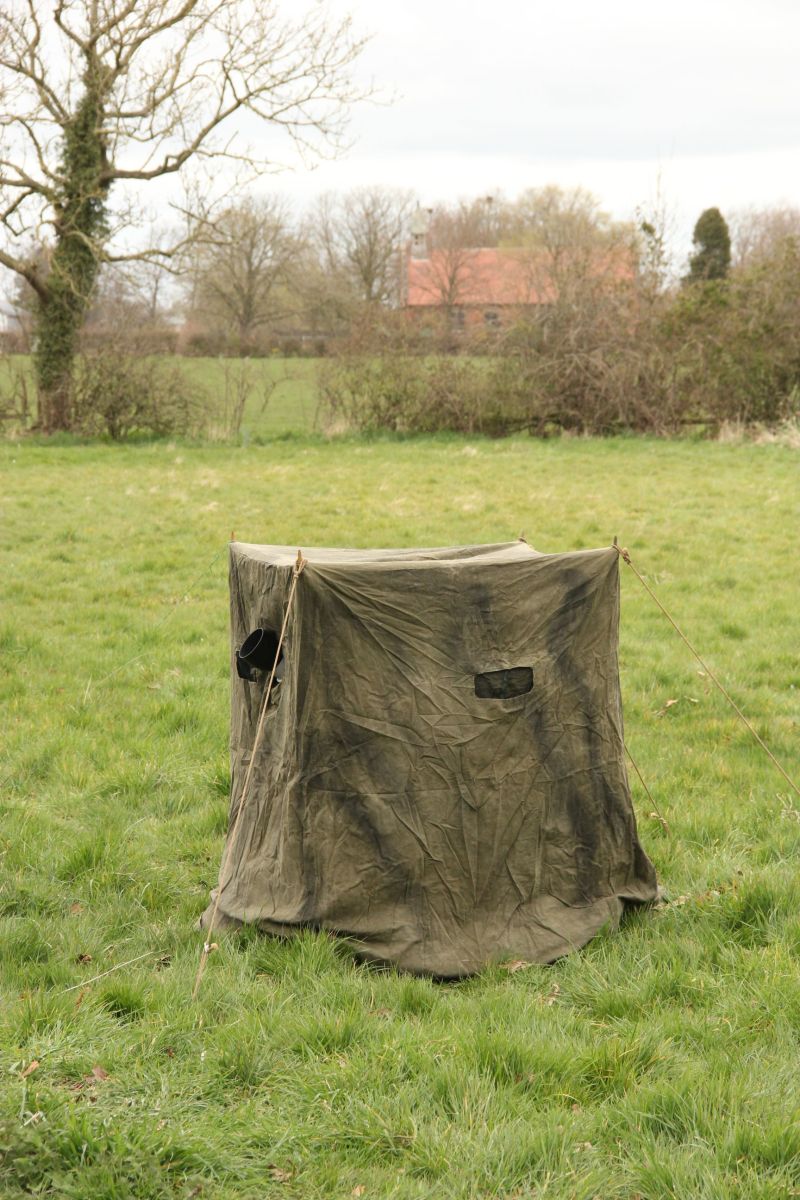 The recording and photography were a success, even getting the quiet growls from the squirrel inside the hole as the jackdaws peered inside (too quiet to play here). And I’m pleased to say that the jackdaws have won, removing all the squirrel nest and replacing it with so many sticks; the hole in that tree must be much bigger than it appears.
The recording and photography were a success, even getting the quiet growls from the squirrel inside the hole as the jackdaws peered inside (too quiet to play here). And I’m pleased to say that the jackdaws have won, removing all the squirrel nest and replacing it with so many sticks; the hole in that tree must be much bigger than it appears.

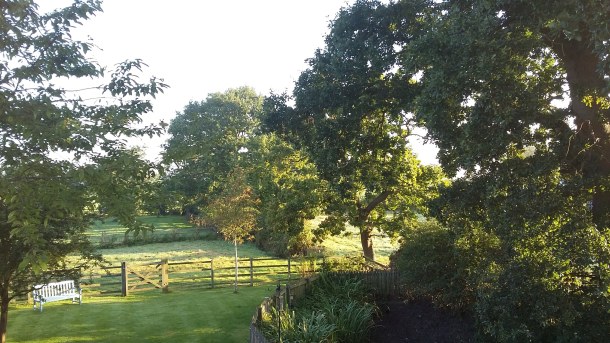 The wildlife is understandably different too. I thought my garden wildlife list in Gosforth was good, but this place offers daily surprises, whether overhead, in our meadows, in the hedgerows laden with berries, or in one of our spectacularly beautiful mature oak trees.
The wildlife is understandably different too. I thought my garden wildlife list in Gosforth was good, but this place offers daily surprises, whether overhead, in our meadows, in the hedgerows laden with berries, or in one of our spectacularly beautiful mature oak trees.

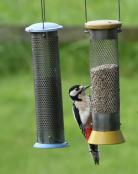

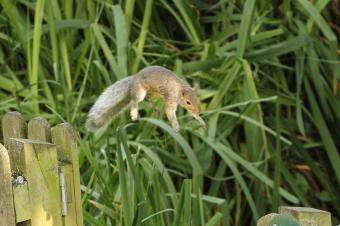



 Your exciting landing is greeted by clouds of Lesser and Brown noddies, which nest in the many trees and bushes, but are equally at home sitting on the back of your chair or feeding their fledglings in the bar.
Your exciting landing is greeted by clouds of Lesser and Brown noddies, which nest in the many trees and bushes, but are equally at home sitting on the back of your chair or feeding their fledglings in the bar.

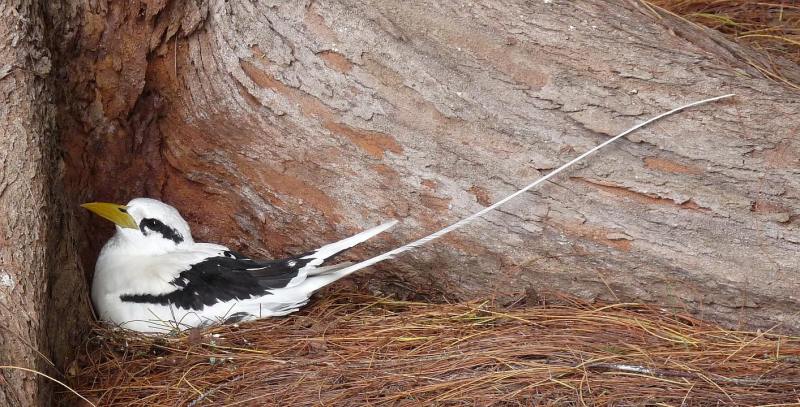



 CalMac ferry at Kennacraig, and it stayed with us all week, gusting crazily from unexpected compass points, then dropping suddenly to nothing, and while most of Britain basked in hot spring sunshine, we had to wait until the latter part of the week for some good clear, dry weather. But by then Islay was really splendid, offering dramatic coastal walks with plenty of birds, beautiful flowers and hardly a soul in sight.
CalMac ferry at Kennacraig, and it stayed with us all week, gusting crazily from unexpected compass points, then dropping suddenly to nothing, and while most of Britain basked in hot spring sunshine, we had to wait until the latter part of the week for some good clear, dry weather. But by then Islay was really splendid, offering dramatic coastal walks with plenty of birds, beautiful flowers and hardly a soul in sight. The enclosed concrete space created a nice reverb, the birds twanging an old bit of steel fencing each time they landed. And the large expanse of the Gruinart Flats was alive with anxious and displaying waders – Redshank, Lapwing and Snipe – mostly I suspect with well-camouflaged young. At first sight this is not a great recording location – dead flat and criss-crossed by roads, but the people of Islay, be they visitors or residents, don’t seem to go out much after 5pm, so the evenings and nights were surprisingly free of traffic noise. And the nearby rookery on the RSPB reserve was a popular location for everyone to pop a microphone down and capture some more evocative crow recordings.
The enclosed concrete space created a nice reverb, the birds twanging an old bit of steel fencing each time they landed. And the large expanse of the Gruinart Flats was alive with anxious and displaying waders – Redshank, Lapwing and Snipe – mostly I suspect with well-camouflaged young. At first sight this is not a great recording location – dead flat and criss-crossed by roads, but the people of Islay, be they visitors or residents, don’t seem to go out much after 5pm, so the evenings and nights were surprisingly free of traffic noise. And the nearby rookery on the RSPB reserve was a popular location for everyone to pop a microphone down and capture some more evocative crow recordings.




